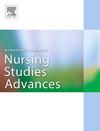具有复杂和综合护理需求的儿童和青少年的优质护理:关于护理敏感指标的讨论。
IF 3.1
Q1 NURSING
International Journal of Nursing Studies Advances
Pub Date : 2024-11-29
DOI:10.1016/j.ijnsa.2024.100275
引用次数: 0
摘要
本文强调需要为具有复杂和综合护理需求的儿童和青少年量身定制护理敏感指标。虽然护理在影响这一人群的护理质量方面发挥着关键作用,但目前的措施主要侧重于成年人群,这造成了差距,阻碍了对不同环境(如急性病、社区和家庭护理)护理贡献的评估。我们研究了具有复杂和综合护理需求的儿童和青少年的优质护理测量的重要性,并强调了国际测量系统的不足。讨论强调了这一弱势群体的多维护理需求,并倡导采用护理敏感指标,这些指标涵盖更广泛的结果,包括身体健康、功能结果、家庭经验和家庭福祉。还强调了将过程指标与改善的患者结果联系起来的证据薄弱,对负面结果的关注,如死亡率,以及缺乏护理敏感指标的理论基础。在衡量哪些组成部分、指标的定义以及制定护理敏感指标的适当方法方面缺乏共识。本文讨论了Donabedian(1988)的结构、过程和结果框架,并概述了在各种环境中用于提高指标集质量的适应性。通过在儿童和青少年护理的背景下进行讨论,本文旨在指导未来的研究朝着综合指标的发展,这些指标可以捕捉护理对具有复杂和综合护理需求的儿童和青少年护理的全部贡献。最后,本文倡导对这一弱势群体的护理敏感指标采用标准化的整体方法,以提高儿童、年轻人及其家庭的护理质量和整体健康和福祉。本文章由计算机程序翻译,如有差异,请以英文原文为准。
Quality care for children and young people with complex and integrated care needs: A discussion on nursing-sensitive indicators
This paper highlights the need for nursing-sensitive indicators tailored to children and young people with complex and integrated care needs. While nursing plays a pivotal role in influencing care quality for this population, current measures predominantly focus on adult populations, creating gaps that hinder the evaluation of nursing contributions across diverse settings such as acute, community, and home care. We examine the importance of quality care measurement for children and young people with complex and integrated care needs and highlight deficiencies in international measurement systems. The discussion highlights the multidimensional care needs of this vulnerable population and advocates for nursing-sensitive indicators that capture broader outcomes including physical health, functional outcomes, family experience, and family well-being. Also highlighted is, the weak evidence linking process indicators to improved patient outcomes, a focus on negative outcomes, such as mortality, and the lack of theoretical foundations for nursing-sensitive indicators. There is a lack of consensus on what components to measure, definitions of indicators, and appropriate methodologies for the development of nursing sensitive indicators. Donabedian's (1988) structures, processes, and outcomes framework is discussed as well as an overview of adaptations used to improve the quality of indicator sets in a variety of settings. By situating the discussion within the context of children's and young people's nursing, this paper aims to direct future research towards the development of comprehensive indicators that capture the full contribution of nursing to the care of children and young people with complex and integrated care needs. Ultimately, this paper advocates for a standardised, holistic approach to nursing-sensitive indicators for this vulnerable population to improve care quality and overall health and wellbeing for children, young people, and their families.
求助全文
通过发布文献求助,成功后即可免费获取论文全文。
去求助
来源期刊

International Journal of Nursing Studies Advances
Nursing-General Nursing
CiteScore
5.80
自引率
0.00%
发文量
45
审稿时长
81 days
 求助内容:
求助内容: 应助结果提醒方式:
应助结果提醒方式:


